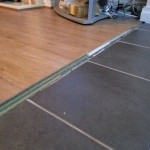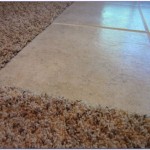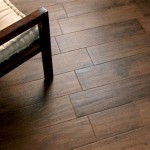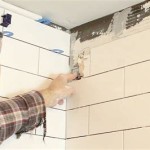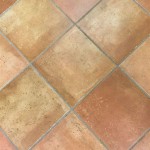Can You Lay Ceramic Tile On Cement?
Laying ceramic tile directly onto a cement surface is possible, but several factors determine whether it's the optimal approach for a specific project. This article explores the considerations for tiling over cement, including surface preparation, necessary materials, and potential challenges.
One primary factor is the condition of the cement surface. A smooth, level, and structurally sound slab provides a suitable base for tile installation. However, cracks, unevenness, or existing coatings can compromise the integrity of the tiled surface. Cracks in the cement may telegraph through the tile, causing unsightly fractures. Uneven surfaces can result in lippage, where tile edges sit at different heights, creating a tripping hazard and an unprofessional appearance. Existing coatings, such as paint or sealers, can interfere with the bonding of the thin-set mortar, leading to tile detachment.
Proper surface preparation is crucial for successful tile installation on cement. Cleaning the cement surface thoroughly is the first step. This involves removing any dirt, debris, grease, or oil that might hinder adhesion. A degreaser and a stiff brush can be used for this purpose, followed by a thorough rinsing and drying period. Any existing coatings must be removed or appropriately treated to ensure adequate bonding. Mechanical methods like grinding or scarifying may be necessary for particularly stubborn coatings. Repairing any cracks or imperfections in the cement is also essential. A patching compound specifically designed for concrete can be used to fill cracks and level uneven areas.
Moisture is another critical consideration. Cement is a porous material that can absorb and retain moisture. Excessive moisture can weaken the bond between the tile and the thin-set mortar, leading to failure. Before tiling, it's essential to assess the moisture content of the cement slab. A moisture meter can provide a quantitative measurement. If the moisture levels are too high, appropriate measures, such as applying a waterproof membrane, must be taken before proceeding with the tile installation.
The type of cement surface also plays a role. Newly poured concrete requires a curing period before tile can be installed. This period allows the concrete to reach its full strength and minimize shrinkage, which could otherwise cause the tile to crack. Generally, a curing period of at least 28 days is recommended. Older concrete slabs may have efflorescence, a white, powdery deposit caused by migrating salts. Efflorescence needs to be removed, and its source addressed before tiling, as it can interfere with the bond and cause discoloration.
Selecting the right materials is equally important. A high-quality thin-set mortar specifically formulated for use on cement backer boards is recommended. This type of mortar provides excellent adhesion and durability. For exterior applications or areas subject to moisture, a modified thin-set mortar with enhanced water resistance is necessary. The type of grout also matters. A sanded grout is typically used for wider grout joints, while unsanded grout is suitable for narrower joints. For wet areas, an epoxy grout offers superior water resistance and stain resistance.
The process of laying ceramic tile on cement involves several steps. After surface preparation, a layout plan should be established to ensure a balanced and aesthetically pleasing tile arrangement. Spreading the thin-set mortar evenly with a notched trowel is crucial for proper tile adhesion. Each tile is then firmly pressed into the mortar, ensuring full contact. Spacers are used to maintain consistent grout lines. After the thin-set has cured, the spacers are removed, and the grout is applied, filling the spaces between the tiles. Excess grout is removed, and the tiled surface is allowed to dry completely.
While laying tile directly on cement may seem straightforward, several potential challenges exist. Improper surface preparation can lead to a variety of issues, including cracked tiles, loose tiles, and uneven surfaces. Using the wrong type of thin-set or grout can also compromise the installation. Furthermore, changes in temperature and humidity can affect the expansion and contraction of both the cement and the tile, potentially leading to cracking or debonding if not addressed properly. Installing a decoupling membrane can help mitigate these risks.
Understanding the complexities of tiling on cement allows for informed decisions about the best approach for a given project. Careful consideration of the cement surface's condition, appropriate surface preparation, selection of suitable materials, and addressing potential challenges ensures a durable and aesthetically pleasing tiled finish.
How To Tile Onto Concrete Floors Porcelain Super

Tiling Over A Ed Concrete Slab Fine Homebuilding

How To Lay Floor Tiles On Concrete Welcome The Rubi Tools Blog

How To Install Ceramic Tiles On Concrete Floor Tile Installation

How To Install Ceramic Tiles On Concrete Floor Tile Installation
How To Lay Floor Tiles On Concrete Stonesuper

How To Install Ceramic Tiles On Concrete Floor Tile Installation
When Cementing Tile Why Do People Add Rows To The Cement Instead Of Just Leaving It Smooth Quora

How To Tile A Concrete Floor Howtospecialist Build Step By Diy Plans

Advantages Disadvantages Of Ceramic Tiles
Related Posts


